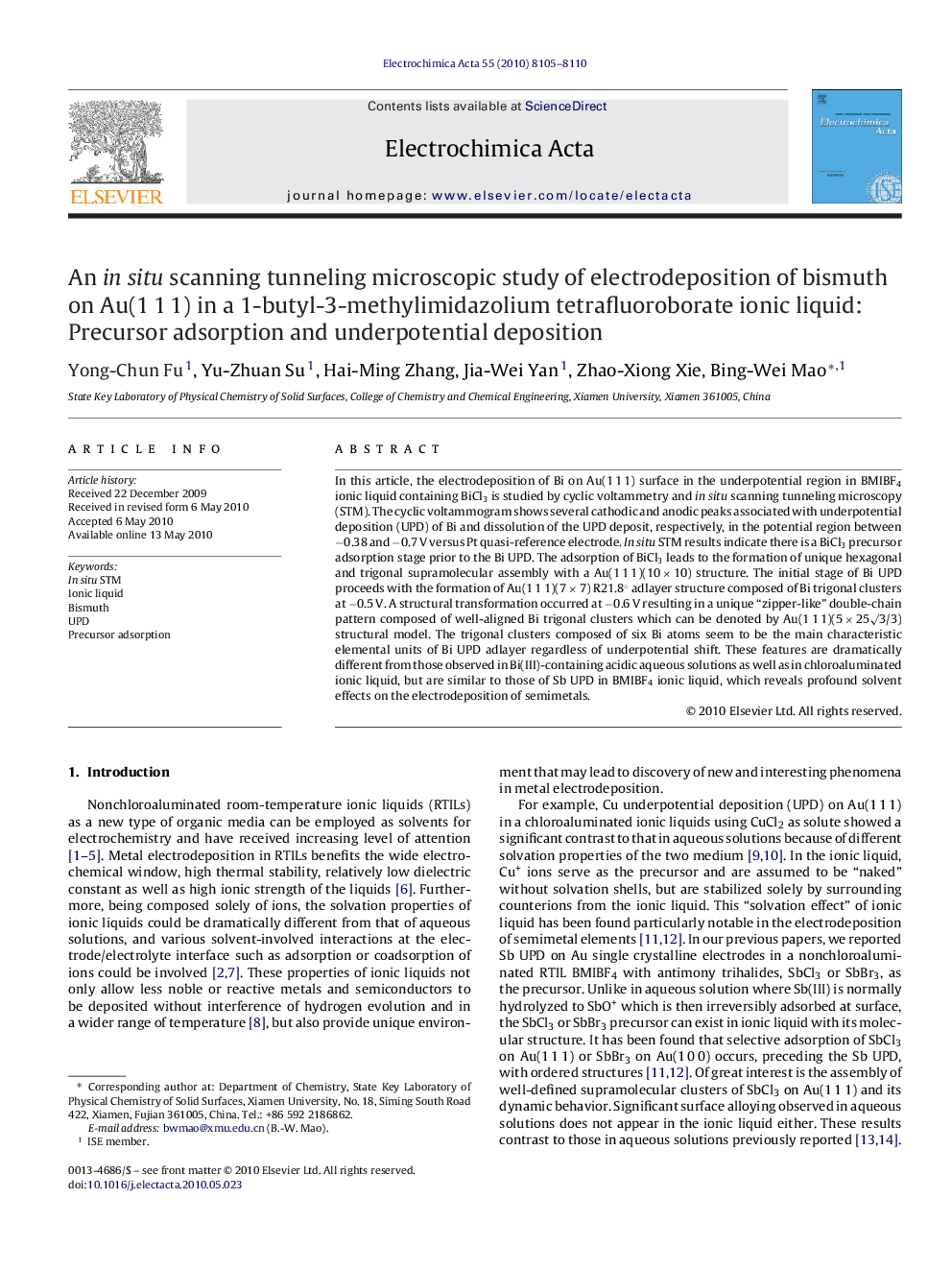| Article ID | Journal | Published Year | Pages | File Type |
|---|---|---|---|---|
| 190425 | Electrochimica Acta | 2010 | 6 Pages |
In this article, the electrodeposition of Bi on Au(1 1 1) surface in the underpotential region in BMIBF4 ionic liquid containing BiCl3 is studied by cyclic voltammetry and in situ scanning tunneling microscopy (STM). The cyclic voltammogram shows several cathodic and anodic peaks associated with underpotential deposition (UPD) of Bi and dissolution of the UPD deposit, respectively, in the potential region between −0.38 and −0.7 V versus Pt quasi-reference electrode. In situ STM results indicate there is a BiCl3 precursor adsorption stage prior to the Bi UPD. The adsorption of BiCl3 leads to the formation of unique hexagonal and trigonal supramolecular assembly with a Au(1 1 1)(10 × 10) structure. The initial stage of Bi UPD proceeds with the formation of Au(1 1 1)(7 × 7) R21.8° adlayer structure composed of Bi trigonal clusters at −0.5 V. A structural transformation occurred at −0.6 V resulting in a unique “zipper-like” double-chain pattern composed of well-aligned Bi trigonal clusters which can be denoted by Au(1 1 1)(5 × 25√3/3) structural model. The trigonal clusters composed of six Bi atoms seem to be the main characteristic elemental units of Bi UPD adlayer regardless of underpotential shift. These features are dramatically different from those observed in Bi(III)-containing acidic aqueous solutions as well as in chloroaluminated ionic liquid, but are similar to those of Sb UPD in BMIBF4 ionic liquid, which reveals profound solvent effects on the electrodeposition of semimetals.
